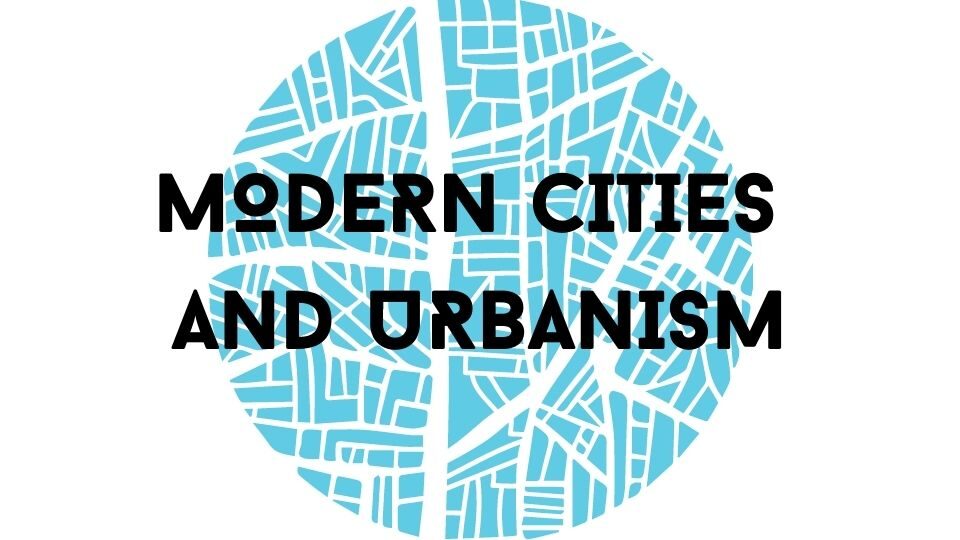Questions
Does Xi’an have an urban master plan?
How has that plan changed and has that plan been realized?
Walls and Grids in Xi’an
The papers reviewed this week trace the history of urban planning in Xi’an to the beginning of the Sui Dynasty in the 6th century CE, detailing the evolution of Xi’an master plan while identifying continuities in ideas and structures. Particularly, despite the lack of coherent efforts and explicit intentions to recreate urban designs of previous eras, the supergrid structure has persisted throughout the centuries while taking on more complicated forms and structures (Chen n.d.).
The philosophical underpinning of city planning in ancient China is found in kaogongji (考工记), an encyclopedia written in as early as the 5th century BCE recording the standardization of over thirty technologies (Sit 2010, 23). The chapter on capital planning and construction highlights several key features including: 1) alignment of walls and streets; 2) grid-like structure comprised of rectangular structures; 3) division into functional zones, and 4) particular orders of major constructions. An ideal capital, according to kaogongji, is a square-shaped city defended by walls, with a square, a walled palace city in the center surrounded by royal residence and religious architecture. Ministries are located south of the capital whereas markets and warehouses are to the north. Buildings outside the palace are divided into blocks by roads running east-west or north-south (Sit 2010, 95-97).
By the time Chang’an (or Daxing at the time before renamed to Chang’an in 618) was constructed in 582 by Emperor Wen of Sui Dynasty on the ground of modern-day downtown Xi’an, city planners in China were no longer following every principle laid out by kaogongji. The grid pattern took on a less perfect form with wards of varying sizes (Lewis 2009, 88-89). The political center of the city—the palace and imperial residence—also shifted from the geographic center to the north of the city, thus redefining the hierarchical structure from concentric circles to vertical progression from north to south. Another unique feature of Chang’an’s grid structure during the Tang Dynasty is the prevalence of walls. Aside from walls enclosing the entire city and imperial quarters, each ward is demarcated by walls nine or ten feet high and divided into quadrants by main roads connecting the four gates (Lewis 2009, 88). While Chen (n.d.) contends that each quadrant is further divided uniformly by narrower local roads, Lewis (2009, 90) records winding alleys within these residential quadrants without fixed patterns. Yet regardless of which model the city planner promoted, Chang’an stood out as one of the most ordered and regimented cities in Chinese history (Sit 2010, 153).

Between the 10th century and the end of the Qing Dynasty in 1911, Xi’an received little attention as the city withered in size and population. Even when China experienced rapid urban growth and economic prosperity during the Northern Song Dynasty between the 10th and 12th centuries, Chang’an (or Jingzhao) never regained its former glory as the city shrank to merely what was the former imperial quarter (Li 2019, 29-31). After driving the Mongols away and consolidating its power, the Ming court renamed the city to Xi’an and ordered a reconstruction in 1370. The new plan expanded the city to the north and the east and relocated the Bell Tower to serve as the geographic center of the city (Sit 2010, 234-235). When the Qing court took over Xi’an in the mid-17th century, the new governor made little changes to the structure of the city, but the Ming palace city, located on the northeastern part of the city, was fortified into a Manchu quarter serving military purposes (Sit 2010, 234-235). Compared to Tang Chang’an, Song Jingzhao and Ming Xi’an were not only smaller but much less ordered. While the grid pattern was still visible, the size of each block became less uniform and organized. More importantly, the walls enclosing each ward were torn down and roads within each block became more natural and less precise (Chen n.d.).
During the Republican era, the Nationalist government devised several plans to revitalize Xi’an as the alternative capital as Nanjing faced an imminent threat from the Japanese invasion. The three major plans proposed in the 1930s shared similarities in the idea of creating independent functional zones including business districts, scenic areas, agricultural sectors, and industrial zones. None of these plans, however, have explicitly stated any intention to expand the grid pattern into the new districts (Wu and Yan 2003, 31-35). Ultimately, the alternative capital plan was abandoned as Chongqing was later designated as the war-time capital. The grid pattern first established by the Ming court survived with some constructions in the “new city (新城)” on the ground of the Manchu city, but the Republican government left the city design of Xi’an largely untouched and expansions beyond the Ming city gate never really materialized.
Since 1949, the new Communist regime has put forth several master plans to rebuild and modernize Xi’an. Like their counterparts during the Republican era, Xi’an city planners between the 1950s and late 1980s proposed protecting existing structures within the city wall and building industrial zones in the suburbs (Wei, Wang, and Yang 2015, 122-123). As numerous manufacturing plants and factories moved from coastal areas to inland cities in the late 1960s to protect China’s vital defense industries, Xi’an’s industrial zone expanded significantly into suburbs to the east and west. Modernization also drove the expansion of commercial and residential districts to the south. Since the 1990s, the Xi’an government has taken bold initiatives to reinvent the city from a historical capital (古都) to big Xi’an (大西安) (Li 2019, 32-36). Pre-Republican era two-stories buildings within the city walls were torn down to make way for apartments and office buildings. Urbanization efforts expanded further into the suburbs. Although modern city planners are no longer adhere to the principles of kaogongji, the grid pattern nevertheless persisted in less perfect, less ordered, and sometimes less recognizable forms. Main roads still divide Xi’an into geometric, though at times not rectangular shapes of varying sizes, and within each block, narrower streets and allies form intricate webs with many cul-de-sacs (Chen, n.d.).
Besides the possibility of urban planners favoring expanding rather than completely reinventing the existing structure in Xi’an, the reorganization of urban space into danwei (单位), or work unit, compounds during the Socialist era between the 1950s and late 1970s also explained the persistence of the grid. As the Communist state sought to mobilize workers and maximize control and productivity, walled danwei compounds were constructed combining factories, residences, and basic amenities. Though these structures varied in size and shape, they together formed a new grid pattern with each danwei functioning as a secluded mini-society (Li 2004, 3-9). One may trace the planning of danwei to the principles found in kaogongji (Bray 2005, 22-25), conceptualize the work unit system as a managerial innovation by Republic era bureaucrats to control and mobilize urban workers (Yeh 1997, 60-82), or find the rigid structure an adaptation from the Soviet design (Tian and Miao 2016, 80-90). Yet interestingly, given Xi’an’s own experience, the danwei design shared great similarity to the Tang model where each ward is walled to solidify control (Friedmann 2005, xviii, 3-5). Ultimately regardless of which tradition socialist urban planners in the 1950s leaned on, the underpinning rationale to strengthen government control over labor is the same.
After economic marketization made the danwei structure obsolete in terms of urban design, the grid pattern is still visible in Xi’an today, albeit the blocks are no longer fenced by cement walls. However, most residential quarters in China today are enclosed by walls and gates. Each block within the modern grid pattern thus consists of relatively open commercial areas and enclosed residential quarters (Chen, n.d.). While walled residential neighborhoods can be interpreted from a culturalist standpoint, their functions and meanings have certainly transformed (Pow 2009). The walls and gates themselves have evolved from a symbol of collectivization and even confinement of the Socialist era to one of protection today. One may even argue that in some cases they serve to represent status and prestige for residents of wealthy neighborhoods (Tang 2018).
Since the erection of Chang’an city in the late 6th century CE, the grid pattern has defined the logic of spatial organization in Xi’an. Yet over the centuries, city planners in different eras have put forth their own master plans to structure urban activities. As the size, shape, and orientation of the grid have changed dramatically over the past 14 centuries, one could see little resemblance—apart from a few architectures that have survived—when overlapping the map of Chang’an in 618 over the contemporary map of Xi’an. More importantly, the organization of the blocks within the grid pattern has changed remarkably as well, forming a full circle from a closed to semi-open and back to a closed system (Chen, n.d.). Ironically, while much of Tang Chang’an has been destroyed by wars, rebellions, and natural disasters, gated walls—the one feature that contradicts the Tang Dynasty’s image of openness, diversity, and prosperity—have returned as a prevalent feature across contemporary Chinese cities.
Bibliography
Bray, David. Social Space and Governance in Urban China: the Danwei System from Origins to Reform. Stanford: Stanford University Press, 2005.
Chen, Xiaofei. “Looking into the Supergrid and Superblock Structure in Chinese Cities: Taking Xi’an and Nanjing as Examples.” In Chinese Urban Planning and Construction: From Historical Wisdom to Modern Miracles, edited by Lanchun Bian, Yan Tang, and Zhenjiang Shen, 37-62. Springer, n.d.
Friedmann John. China’s Urban Transition. Minneapolis: University of Minnesota Press, 2005.
Lewis, Mark Edward. China’s Cosmopolitan Empire: The Tang Dynasty. Cambridge: Belknap Press, 2009.
Li, Hanlin. Thoughts on Chinese Work-Unit Society. Shanghai: Shanghai People’s Publishing House, 1994.
Li, Leah Cheung Ah. Where the Past Meets the Future: The Politics of Heritage in Xi’an. Münster, Zürich: Lit-Verlag, 2019.
Pow, Choon-Piew. Gated Communities in China: Class, Privilege and the Moral Politics of the Good Life. New York: Routledge, 2009.
Sit, Victor F S. Chinese City and Urbanism: Evolution and Development. New Jersey: World Scientific, 2010.
Tang, Beibei. China’s Housing Middle Class: Changing Urban Life in Gated Communities. New York: Routledge, 2018.
Tian, Yipeng and Miao Yiyan. “Soviet Elements in the Formation of the Danwei System: Edinonachalie as the Core in the 1950s.” Jilin University Social Sciences Edition 56, 3 (May 2016): 80-90.
Wu, Hongqi and Yan Yan. “Study on Renewing Patterns in History and Renewing Strategies in the New Century of Xi ‘an.” Collections of Essays on Chinese Historical Geography 18, no. 4 (2003): 25-37.
Yan, Wei, Yue Wang, and Feng-Fan Yang. “Research on Industrialized Spatial Features of Xi’an Modern City.” In Proceedings of the 4th International Conference on Civil Engineering and Urban Planning, Beijing, 2015, 121-126. Beijing: CRC Press.
Yeh, Wen-hsin. “Republican Origins of the Danwei: The Case of Shanghai’s Bank of China,” in Danwei: The Changing Chinese Workplace in Historical and Comparative Perspective, edited by Xiaobo Lü and Elizabeth J. Perry, 60-88. New York: M. E. Sharpe, 1997.


One Reply to “Xi’an: The City as Ordered Universe”
Comments are closed.